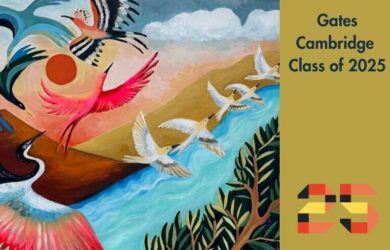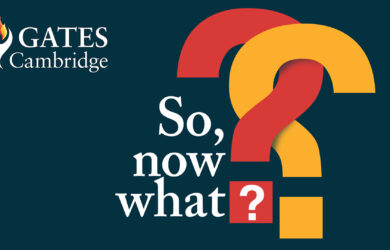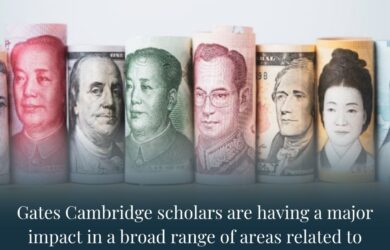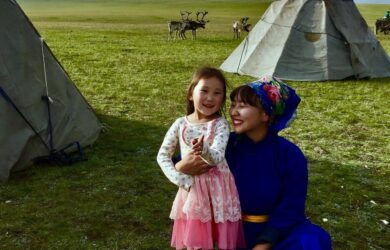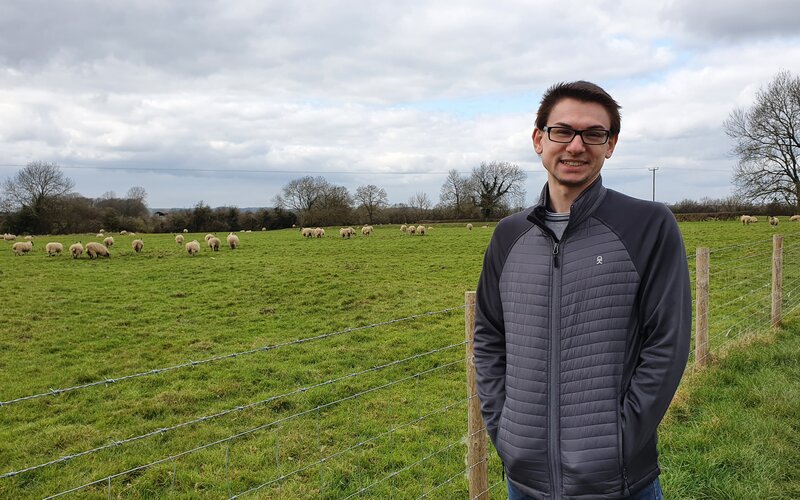
Nick Posegay talks about his research into how language united people across the Middle East in the Middle Ages and aided the communication and exchange of ideas.
My aim is to highlight the shared history of the Abrahamic traditions and to show that there are more things that unite people in the region than divide them.
Nick Posegay
Nick Posegay has just been awarded a Leverhulme Early Career Fellowship at Cambridge’s Faculty of Asian and Middle Eastern Studies for a project on “Interfaith Exchange in the Intellectual History of Middle Eastern Languages”. The three-year fellowship follows his PhD on the religious and linguistic multiculturalism of the medieval Middle East.
The Fellowship will involve a broad survey of manuscripts in the Taylor-Schechter Cairo Genizah collection at Cambridge’s University Library and in various Syriac Christian libraries.
Nick hopes to discover material that has been overlooked in order to provide more insight into the connections between different religious groups in the Middle East who faced similar challenges in preserving their religious texts during the period spanning the seventh to eleventh centuries. He is interested in how language – for instance, the dominance of Arabic in the region – united people across the region and aided the communication and exchange of ideas.
A passion for history
Nick’s passion for history began early. Born and raised in Chicago, his father is a history teacher. When he was in middle school, his father taught US history and Nick would listen to him talking about his lesson plans. That fed his own interest in the subject, although he had a wide range of interests at the time, reading voraciously, particularly reference books and Wikipedia, and investigating all subjects.
As his school studies progressed, Nick gravitated more towards history and social studies. When he left school for the University of Chicago, he planned to study the history of religions and started with medieval European history. Then he took an Introduction to the Middle East class with Professor Fred Donner and was keen to know more. He shifted his interests towards Middle Eastern studies, fascinated by the interfaith exchange in the region, given that many of the world’s great religions started there. He took classes in Aramaic, Hebrew and Arabic and ended up focusing on medieval history in the Middle East.
Nick says he is interested in the interplay of different ideas and themes between religions, an area which has attracted a lot of scholarly interest in the last decades.
In his last year of undergraduate studies, Nick did a dissertation which he expanded on for his master’s, also at the University of Chicago, and which formed the basis of his research proposal for Cambridge. He had been taking a class in Arabic religious texts when James Robinson, Caroline E. Haskell Professor of the History of Judaism, Islamic Studies, and the History of Religions, mentioned that it was interesting how medieval Hebrew and Arabic scribes both created ‘vocalisation’ points, which suggest how words should be spoken aloud in the Bible and the Qurʾan, at the same time. Robinson was one of Nick’s teachers at the time and ended up being his undergraduate dissertation adviser. Nick was intrigued by the fact that the use of vocalisation points appeared simultaneously in both texts. He wanted to know why.
He says the linguistic commonalities between different religious texts shows how the different religious groups in the Middle East were mixing in the Middle Ages and how the different religions shared challenges relating to preserving their holy texts in the face of a rapidly changing religious and linguistic landscape.
The study of vocalisation points also shows how medieval scribes were introducing new writing techniques to record precise linguistic details and how these techniques were shared between religious groups from the early Islamic period until the later Middle Ages as Arabic became more dominant.
During his master’s Nick added Syriac, a dialect of Aramaic spoken by Christians in the Middle East, to his language repertoire, meaning he was able to compare Syriac texts with Jewish and Muslim texts and study the linguistic links between the three different traditions. He says: “All the little dots used to record vocalisation are related on a conceptual level. The same idea informed their inception.” The dots are normally reserved for important religious texts.
Alongside his studies, Nick took a job as a security guard at the Oriental Institute Museum of the University of Chicago. The job allowed him to spend hours and hours looking at the exhibits and listening to the tour guides. By the end of his time at the University of Chicago he himself was a tour guide and had helped to run the lecture series for visiting scholars.
Cambridge
Nick applied to do his PhD in Asian and Middle Eastern Studies at Cambridge, drawn in part by the Taylor-Schechter Cairo Genizah collection at Cambridge’s University Library, which houses a large number of manuscript fragments found in a synagogue in Cairo and brought to Cambridge in the late nineteenth century . A ‘genizah’ is a hidden space meant to store sacred texts that are too old or damaged for further use. Another big draw was linguistics expert Professor Geoffrey Khan who shared an interest in Nick’s research proposal.
Nick [2017] began his PhD in 2017 and has recently passed his viva. He says when Covid happened he had completed most of his research, but still had to rely on digital access to documents. This limits the information he can get from the manuscripts, especially if they are heavily damaged.
Nick has been able to work on the Taylor-Schechter Cairo Genizah collection during his time at Cambridge and, while volunteering to write descriptions of the manuscripts, he recently discovered some Judaeo-Arabic manuscripts which are very precisely vocalised to show how a medieval Jewish scribe pronounced Arabic. He says the language used is closer to modern day dialects in Cairo than the Classical Arabic used in the Qur’an. Nick volunteered to work on the Genizah collection from 2019 to 2020 and then took up a paid part-time position this year.
In addition, Nick has been involved in a range of side projects, investigating Judaeo-Arabic dialects, Genizah Qurʾan manuscripts and Syriac scribal culture, which, he says, have helped him through the Covid lockdowns.
He has published nine peer-reviewed articles since he came to Cambridge and has another under review. He has also been writing articles which are aimed at a broader, non-specialist readership, for instance, he has one coming out in the 2021 Scholar magazine later this month.
He says: “My aim is to highlight the shared history of the Abrahamic traditions and to show that there are more things that unite people in the region than divide them. I want to promote public knowledge of the unique, cosmopolitan civilisation that formed the foundations of modern Judaeo-Christian and Islamic society. I also want to educate people on the often overlooked connections between their lives and the historical past in order to promote the importance of cultural heritage, pluralism and cooperation for building a more peaceful, interconnected world.”








